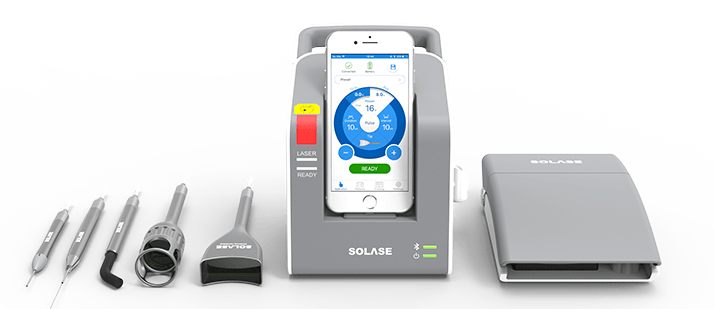In 1989 the first laser model specifically designed for the dental profession became available for treating oral soft tissue. Since then, many different wavelengths have been introduced, and the practitioner can easily use them on both hard and soft tissues for both surgery and healing. This new technology greatly expands the scope of procedures while making them easier and more comfortable for patients. Encouraged by an ever-increasing evidence of the safe and effective use of lasers, there are a growing number of practitioners embracing the technology and appreciating how their patients can benefit.
A well-thought-out decision leads to a better business operation and good management. Hasty decisions can lead to financial distress and instability in career and unnecessary emotional stress. Similarly, before investing in a dental laser, we can ask the following questions:
Why should I buy a laser?
The dental laser should become part of the practitioner’s armamentarium. The photonic energy, with its unique properties of monochromatism and coherency, transmitted through an ergonomic delivery system, becomes a novel instrument for dental care. When used with proper knowledge, understanding, and correct training, it can function as an integral part of any dental treatment appointment. The clinician can have assurance that each laser procedure is being safely and easily performed without some of the disadvantages that were present when the scalpel or electrosurgery was used. Two examples can be listed: disinfection during a laser incision versus a bleeding scalpel cut and safe removal of tissue during laser implant fixture exposure versus certain damage with an electrosurgical tip. In addition, for those who challenge themselves to constantly better their skills, a laser is a must «have» for them - not as a «gadget» but as a surgical instrument.
What difference will it make for my patients and myself?
The incorporation of technology in dentistry has improved the way we serve our patients. Digitized radiographs are replacing traditional radiographs, diagnosis is done on 3D model of teeth and bone (CBCT) and single sitting root canals, and CAD/CAM technology is gaining popularity. All these advancements including lasers are being incorporated to improving the dental care provided to the patients on daily basis.
Dental pain is scored among the world’s first ten phobias. In some patients, just the sight of dental chair, the whining noise of air rotor, or the white coat of a dentist can create panic attacks. Dental lasers make a huge difference in the life of such patients since they can reduce the level of stress and anxiety and help a clinician to deliver the best of dentistry. As an added benefit, it has been shown that lasers can help to provide neural blockage leading to analgesic effect and anti-inflammatory effects.
Will it be income generating?strong>
Dental lasers can help the practitioner to formulate treatment plans for the benefit of the patients. As mentioned previously, the existing procedures will be improved and new or previously referred treatments can be offered. The dentist may necessarily increase the fee schedule to reflect the additional cost of the laser purchase, but that adjustment should be explained by simply enumerating the benefits of using the instrument.
The laser surgical procedures are generally shorter than traditional surgeries and are usually performed on an outpatient basis. Patients usually have less pain, swelling, and scarring than with traditional surgeries. This makes a huge difference in the quality of life of patient since there is usually no long recovery period. Just as important, the practitioner can be more efficient because the surgical appointment and necessary pre- and post-procedure protocol is less complex and time consuming. Thus there could be more time available for other patients which will in turn generate more revenue and help to grow the practice.
An additional advantage is that multiple procedures may be performed during one visit, thus increasing production. It naturally follows that more patient’s acceptance of a proposed treatment, coupled with a positive, comfortable, and healthy outcome, will result in confident referrals of new patients to the practice.
When should a laser be used?
The clinician should know the indications for the use of the laser. Continuing education will certainly provide suggested techniques and protocols. When reviewing the steps necessary for a procedure, there should be an analysis of how the laser could be used either as an adjunct or as monotherapy. Equally importantly, the instrument and all of the needed accessories should be easily obtained—within reach or stored close by—so that it can be inserted into the procedure. As the clinician continues to utilize the laser, it will become essential in the armamentarium. For some treatments, it can be substituted for other instruments; in other procedures, it can be used adjunctively. Likewise, the experience of repeated use will result in confidence in delivering excellent patient care. Indeed, the laser will become the smart investment that was hoped for during purchase.